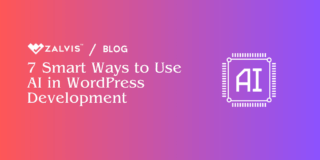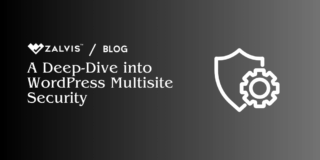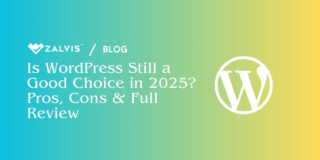Discover the power of WordPress GIFs in enhancing your website’s engagement and user experience. Learn how to effectively integrate and optimize GIFs on your WordPress site to boost communication, shareability, and brand personality. Dive into best practices, advanced tips, and future trends to make the most of this dynamic visual content.
Introduction of WordPress GIFs

In today’s digital age, visual content plays a crucial role in capturing and retaining audience attention. Among the various forms of visual media, GIFs have emerged as a particularly engaging format. GIFs, or Graphics Interchange Format files, are short, looping animations that are effective at conveying emotions, illustrating concepts, and adding dynamic elements to web content.
This article explores the numerous benefits of using GIFs on your WordPress website, provides a guide on how to integrate them effectively, and discusses best practices to ensure they enhance your site’s performance and user experience.
The Evolution and Popularity of GIFs
GIFs have been around since the late 1980s, but their resurgence in popularity is largely attributed to social media and messaging platforms. These short animations are a perfect blend of images and videos, making them ideal for conveying reactions, emotions, and short narratives in a matter of seconds.
The looping nature of GIFs, combined with their ability to convey a lot of information quickly, makes them highly engaging and shareable. Platforms like Twitter, Facebook, and Instagram have embraced GIFs, leading to their widespread use in digital marketing and communication strategies.
Benefits of Using GIFs on Your WordPress Website
Integrating GIFs into your WordPress website offers several compelling advantages. Firstly, GIFs enhance user engagement. Their dynamic nature captures attention more effectively than static images or text, leading to longer time spent on your pages. This increased engagement can translate into lower bounce rates and higher conversion rates, whether your goal is to entertain, inform, or sell.
Secondly, GIFs improve communication. They can succinctly convey complex emotions, reactions, and processes, which might take several paragraphs of text to explain. This makes them particularly useful for tutorials, how-to guides, and any content where visual demonstration can aid understanding.
Thirdly, GIFs boost shareability. Content that includes GIFs is more likely to be shared on social media, expanding your reach and visibility. This is especially beneficial for marketing campaigns aimed at increasing brand awareness.
Fourthly, although GIFs themselves do not directly impact SEO, their ability to enhance user engagement can indirectly benefit your search engine rankings. Engaged users are more likely to stay longer on your site, interact with your content, and share it, all of which are positive signals to search engines.
Lastly, GIFs help to humanize your brand. They add a touch of personality and humor, making your content more relatable and memorable. This can help build stronger emotional connections with your audience, fostering loyalty and trust.
Types of GIFs and Their Uses
Understanding the different types of GIFs and their appropriate uses is crucial for effective implementation. Reaction GIFs are among the most popular types, capturing emotions such as laughter, surprise, or excitement. These are commonly used in comments, replies, and social media posts to express feelings succinctly.
Cinematic GIFs are short clips from movies, TV shows, or other video content. They are often used to reference popular culture, adding humor or context to your content. These GIFs can make your website more engaging and relatable, especially if your audience is familiar with the referenced material.
Instructional GIFs demonstrate how to perform a task or use a product. They are invaluable for tutorials, guides, and instructional content, simplifying complex processes into easy-to-follow visual steps. This type of GIF can enhance the educational value of your content and improve user satisfaction.
Looping GIFs have a seamless loop and can be mesmerizing to watch. They are often used for visual effects, animations, and artistic purposes. These GIFs can add an aesthetic appeal to your site, making it more visually interesting and engaging.
Animated infographics are data-driven GIFs that present information dynamically. They can make statistics and data more digestible and interesting, improving the overall user experience. These GIFs are particularly useful for presenting complex information in a visually appealing way.
How to Find and Create GIFs for Your WordPress Website
There are several ways to find and create GIFs for your website. Websites like Giphy, Tenor, and Imgur offer extensive libraries of GIFs that you can browse and download. These platforms provide a wide range of GIFs, from reaction GIFs to cinematic clips, making it easy to find the perfect GIF for your content.
If you prefer to create custom GIFs, tools like Photoshop, Giphy’s GIF Maker, and Ezgif allow you to convert video clips or images into GIFs. These tools offer various customization options, such as adding text, filters, and effects, enabling you to create GIFs that align with your brand’s style and message.
For instructional GIFs, screen recording software like Camtasia or ScreenFlow can capture your screen and export the recording as a GIF. This is useful for creating step-by-step tutorials or demonstrations, enhancing the educational value of your content.
Optimizing GIFs for Web Performance
While GIFs are engaging, they can also be resource-intensive and impact your website’s performance if not optimized correctly. Reducing file size is crucial. GIFs can be large in size, which can slow down your website. Use tools like Ezgif or iLoveIMG to compress your GIFs without compromising quality. Reducing the number of frames and colors in your GIF can also help decrease the file size.
Implement lazy loading to ensure that GIFs are only loaded when they are visible on the screen. This can significantly improve your website’s loading time and performance. WordPress plugins like Lazy Load by WP Rocket can help you achieve this. In some cases, using video formats like MP4 instead of GIF can result in smaller file sizes and better performance. MP4 videos can loop and autoplay, providing a similar experience to GIFs with improved performance. Ensure that your GIFs are responsive and adapt to different screen sizes. This will provide a consistent user experience across devices. Use CSS and HTML to make your GIFs responsive and fit within the layout of your website.
Integrating GIFs into Your WordPress Website
Integrating GIFs into your WordPress website is a straightforward process. You can upload GIFs to your WordPress media library just like any other image. Go to the Media section in your WordPress dashboard, click “Add New,” and upload your GIF file. To insert a GIF into a post or page, click on the “Add Media” button in the WordPress editor, select your GIF from the media library, and click “Insert into post.” You can also add GIFs using the Image block in the Gutenberg editor.
If you want to embed a GIF from an external source like Giphy, you can use the embed code provided by the platform. Simply copy the embed code and paste it into the HTML editor of your WordPress post or page. There are several WordPress plugins that make it easy to add and manage GIFs on your website. Plugins like WP GIF Player and WP GIF offer features like GIF galleries, autoplay controls, and more.
Best Practices for Using GIFs on Your Website
To ensure that your use of GIFs enhances your website rather than detracts from it, follow these best practices. Ensure that the GIFs you use are relevant to your content and add value to the user experience. Avoid using GIFs for the sake of it, as this can distract from your message. While GIFs are engaging, using too many can overwhelm your visitors and slow down your website. Use GIFs sparingly and strategically to highlight key points or add emphasis.
Make sure your GIFs are accessible to all users, including those with disabilities. Provide alt text descriptions for your GIFs, and consider using captions or transcripts for instructional GIFs. Ensure that the GIFs you use align with your brand’s tone and style. Consistency in visual elements helps reinforce your brand identity and create a cohesive experience for your visitors. Test your website’s performance and user experience after adding GIFs. Monitor loading times, check for responsiveness, and gather feedback from users to ensure that your GIFs are enhancing the overall experience.
Case Studies: Successful Use of GIFs on WordPress Websites
To illustrate the effective use of GIFs on WordPress websites, let’s look at a few case studies. BuzzFeed is known for its extensive use of GIFs to add humor and visual interest to its articles. By incorporating reaction GIFs and cinematic clips, BuzzFeed enhances reader engagement and encourages social sharing.
HubSpot uses instructional GIFs in its blog posts and guides to demonstrate how to use its software and tools. These GIFs make complex instructions easier to follow and improve the overall user experience. The New York Times incorporates animated infographics and data-driven GIFs in its articles to present information in a dynamic and engaging way. This approach makes data more accessible and interesting to readers.
Tools and Plugins for GIF Integration
WordPress offers several tools and plugins to help you integrate GIFs seamlessly into your website. Giphy Embed allows you to easily search for and embed GIFs from Giphy directly within the WordPress editor. It simplifies the process of adding GIFs to your posts and pages. WP GIF Player enables you to create GIF galleries, control autoplay settings, and customize GIF display options. It provides a user-friendly interface for managing GIFs on your website.
Ezgif is an online tool that offers a range of GIF editing options, including resizing, cropping, and optimizing GIFs. It can help you prepare GIFs for use on your WordPress site. Camtasia and ScreenFlow are screen recording tools that can export recordings as GIFs. They are ideal for creating instructional GIFs that demonstrate how to use software or perform tasks.
Legal Considerations When Using GIFs
When using GIFs, it’s important to consider legal implications, especially if the GIFs are derived from copyrighted material. Here are some key points to keep in mind:
- Copyright Infringement: Using GIFs created from copyrighted content (like movies or TV shows) without permission can lead to legal issues. Always ensure you have the right to use any GIFs you upload.
- Licensing: Many GIF libraries offer GIFs under various licenses. Ensure you understand the licensing terms and adhere to them to avoid potential legal problems. Platforms like Giphy often have specific guidelines for commercial use.
- Attribution: When using GIFs from certain creators, you may need to provide attribution. This is typically specified in the GIF’s licensing terms and can often be handled by including a link back to the source.
Conclusion
GIFs offer a versatile and engaging way to enhance your WordPress website. They can improve user engagement, communication, and shareability while adding personality to your brand. By understanding the different types of GIFs, how to optimize them for web performance, and best practices for integration, you can effectively leverage this dynamic format to achieve your website goals.
Whether you are using GIFs for humor, education, or branding, they have the potential to make your content more compelling and memorable. As technology and trends evolve, staying informed about new developments in GIF usage will ensure your website remains dynamic and engaging for your audience.
If you enjoyed this article, then you’ll love Zalvis's WordPress Hosting platform. Turbocharge your website and get 24/7 support from our veteran team. Our world-class hosting infrastructure focuses on auto-scaling, performance, and security. Let us show you the Zalvis difference! Check out our plans.



